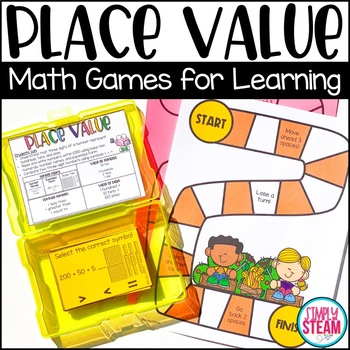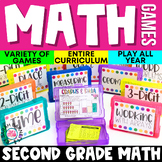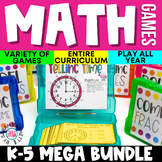- PDF
Also included in
- Get your play on with this comprehensive Second Grade Math Games for Centers and Review Bundle! Designed to cover all second-grade math skills, these games are the perfect way to help your students master important math concepts without the bores and snores of a textbook! As a second-grade teacher,Price $23.00Original Price $52.50Save $29.50
- Get excited about your 2nd grade math centers! Imagine having a class full of students engaged in math! This bundle of math games is versatile as it can be used in many different ways! Download the preview to see what's all included!These are some of my best selling resources. Teachers love these gaPrice $37.00Original Price $99.05Save $62.05
- Want an easy way to keep your kids engaged and learning during math centers? You're going to love this Elementary Math Intervention Kits for Review & Centers Bundle. These self-checking games follow the same routine so students can play INDEPENDENTLY! This bundle includes 96 math games to coverPrice $97.00Original Price $310.24Save $213.24
Description
Let's make learning feel like play! You're going to love these Addition and Subtraction Word Problems 2nd Grade Math Games! These self-checking games follow the same simple routine, so you're not wasting time reteaching procedures.
These games are easy for kids to play with, and you'll appreciate seeing the growth in mastery.
SAVE BIG when you purchase the SECOND GRADE BUNDLE!
Do you ever feel like you're zooming through the curriculum, and your students are lost in the sauce? The worst is when they raise their hand to tell you, "We didn't learn that yet." (YES, YOU DID! )
With these math games, you can review concepts during math centers and small groups to ensure mastery!
Here's what you'll get:
✅ Instructions on how to play, but you'll only need these once.
✅ Game board in color and ink-saving black lines
✅ 40 self-checking game cards with a value
✅ Multiple ways to play so you'll never get bored
✅ Four games (STEM to Win, Game Board, Race to 20, and Pick Up Sticks)
Skills include:
- Understand that three digits of a number represent hundreds, tens, and ones
- Read and write numbers within 1,000 using base-ten numerals, number names, and expanded form
- Compare two three-digit numbers using symbols >, <, =
This game is AMAZING because:
❤️Students talk about math and explain how they solved the problem.
❤️Students persevere through math tasks together.
❤️Students practice applying skills to solve math problems.
❤️Students make sense of math problems by discussing them with a partner.
Looking for a different grade level?
- Kindergarten Math Games
- 1st Grade Math Games
- 3rd Grade Math Games
- 4th Grade Math Games
- Multiplication and Division Bundle
- Math Fact Fluency
I absolutely love this game and I know that you AND YOUR STUDENTS will too!
Hey, are we connected yet?
Click that cute, little star at the top to get connected to Simply STEAM. All new resources are 50% off for the first 24 hours.








